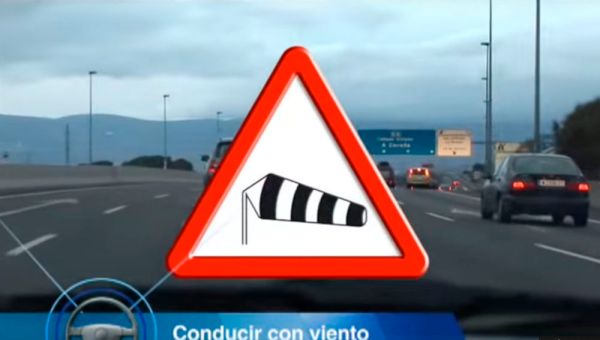Wind is quite literally a force of nature that can provide welcome cooling on a hot summer´s day, generate electricity, and provide power to boats, amongst many other benefits, but it can also play havoc when driving.
According to the DGT, there are three main situations we should be aware of when it comes to driving on a windy day.
The exits of tunnels
Tunnels allow us to cross landforms easily and quickly, but in case of strong wind they can be synonymous with danger. To avoid problems, be sure to keep a firm grasp of the steering wheel when you are about to exit a tunnel.
After overtaking a large vehicle
We don´t need to get into the physics of drag but if you have ever overtaken a large vehicle on a windy say you will notice that forces are at work surrounding that vehicle before, during and after we pass.
The trucks can act as a wall so the wind and so once we pass, we can feel a gust coming from the side which could force our vehicle towards a direction we didn´t intend. Again, be sure to be gripping the steering wheel firmly.
Passing buildings near the road
If we drive through a windy area with large buildings located near the road, or densely wooded areas, they too can act as walls to the wind, making gusts stronger in open areas, which in turn can alter the stability of our vehicles. It is recommended to firmly hold the steering wheel and look, for example, at the surrounding vegetation or when openings such as streets may appear, to determine the strength and direction of the wind.
Overall, when driving on a windy day, you have probably gathered by now that it is important to keep a firm grip on the steering wheel. It is also important not to make any sudden movements, as the trajectory of our vehicle can alter in a fiercer manner than we might have anticipated when the wind catches the surfaces of the vehicle.
Try to maintain your course in the lane you are driving in and slow down if necessary, to reduce the risk overall. It is also important to maintain a safe distance, not only from vehicles in front and behind, but also vehicles to the side as we are overtaking or being overtaken.
Keep an eye out for warning signs too as wind can be present at any time in certain areas. Windsocks are sometimes used to indicate the power and direction of the wind, so take note if you see one of these too.
Be especially alert for large and small vehicles, such as trucks or motorbikes, as each of these will face their own challenges in wind and so extra care must be taken in their presence.






